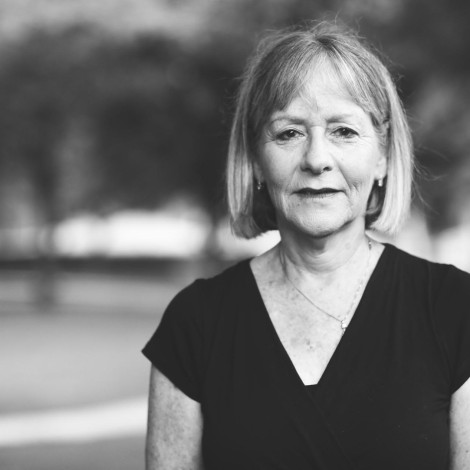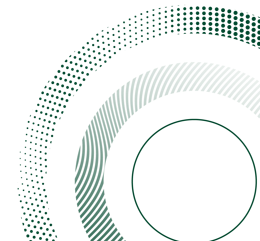
פרופ' נועה אהרוני
אוריינות מידע, אוריינות דיגיטלית, אוריינות בינה מלאכותית, מדיה חברתית, הטמעת טכנולוגיות, גישה פתוחה למדע
פרופ' נועה אהרוני הצטרפה למחלקה למדעי המחשב באוניברסיטת בר־אילן בשנת 2009 ומתמחה באוריינות מידע, אוריינות דיגיטלית, אוריינות בינה מלאכותית, מדיה חברתית, הטמעת טכנולוגיות בגישה פתוחה למדע.
קורות חיים
פרופ' נועה אהרוני השלימה תואר ראשון בייעוץ חינוכי וספרות אנגלית באוניברסיטת תל אביב (1983) ותעודת הוראה למדה בבית הספר לחינוך באוניברסיטת בר־אילן (1984). היא המשיכה בלימודיה לתארים מתקדמים באוניברסיטת בר־אילן, תואר שני במחלקה ללימודי מידע (1997), את עבודת התזה כתבה בנושא "השפעת לימוד האנגלית בסביבת אינטרנט על תלמידי בי"ס תיכון", בהנחיית ד"ר אורי חנני; ותואר שלישי בבית הספר לחינוך (2002), נושא עבודת הדוקטור שכתבה הוא: "השפעת לימוד האנגלית בסביבת אינטרנט על הקשר בין סגנון קוגניטיבי, סגנון למידה, הישגי לימודים ושביעות רצון מהלימודים", בהנחיית פרופ' ברוך אופיר.
בשנים 2014–2019 כיהנה פרופ' אהרוני בתפקיד ראשת המחלקה למדעי המידע ומשנת 2019 היא משמשת יו"ר אקדמי של המרכז לשירותי מידע דיגיטליים (מלמ"ד) במרכז החישובים הבין־אוניברסיטאי, וכן עורכת כתב־העת "מידעת".
קורסים
מאגרי מידע במדעי החברה
סמינר: כיווני מחקר באינטרנט
סמינר: מדיה חברתית
פירסומים
Aharony, N. (2004). Reference rules according to the APA style. Meidaat, 1, 81- 86.
Aharony, N. (2006). Different perceptions among Library and Information Science students who study in three different institutions. Meidaat, 2, 27- 42.
Aharony, N. (2006). The use of learning strategies among students learning English in an Internet environment. Dapim, 38, 153-182.
Aharony, N. (2007). School library and its librarians. Perceptions and attitudes of the pupils, teachers and librarians. Meidaat, 3, 32-44.
Aharony, N. (2006). The librarian and the information scientist: Different perceptions among Israeli information science students. Library & Information Science Research 28 (2), 235-249.
Aharony, N. (2006). The use of "deep" and "surface" learning strategies among students learning English as a foreign language in an Internet environment. British Journal of Educational Psychology 76 (2), 851-866.
Aharony, N., Raban, D. (2008). Economics of information goods: An interdisciplinary subject for Israeli LIS and MBA curricula. Library & Information Science Research 30 (2), 102-107.
Dotan, G., Aharony, N. (2008). Information literacy roles of library media specialists in high schools: Israeli perspectives. Journal of Information Literacy, 2 (1), ojs.lboro.ac.uk/ojs/index.php/JIL/article/viewArticle/27k
Aharony, N. (2009). The use of Wiki in a knowledge management academic course: A qualitative investigation. Journal of Web Librarianship, 3 (1), 35-53.
Aharony, N. (2009). Web 2.0 use by librarians. Library & Information Science Research, 31 (1), 29-37.
Aharony, N. (2009). Librarians' attitudes towards marketing library services. Journal of Librarianship and Information Science, 41 (1), 39- 50.
Bronstein, J. Aharony, N. (2009). Views and dreams: A Delphi investigation into Library 2.0 applications. Journal of Web Librarianship, 3 (2), 89-109.
Aharony, N. (2009). The influence of LIS students' personality characteristics on their perceptions towards Web 2.0 use. Journal of Librarianship and Information Science (41) 4, 227-241.
Aharony, N. (2009). An exploratory analysis of librarians' blogs: Their development, nature and changes. Aslib Proceedings, 61 (6), 587- 604.
Aharony, N. (2009). Librarians and information scientists Blogosphere: An exploratory analysis. Library & Information Science Research 31, 174– 181.
Aharony, N. (2010). LIS blogs' comments: An exploratory analysis. Libri. 60(1), 65-77.
Aharony, N. (2010). Twitter use in libraries: An exploratory analysis. Journal of Web Librarianship, 4(4), 333-350.
Aharony, N. (2010). Information literacy in the professional literature: An exploratory analysis. Aslib Proceedings. 62 (3), 261-282.
Aharony, N. (2011). Librarians' attitudes towards knowledge management. College & Research Libraries, 72 (2), 111-128.
Aharony, N. (2011). Web 2.0 in the professional LIS literature: An exploratory analysis. Journal of Librarianship and Information Science, 43 (1), 3-13.
Aharony, N. (2011). Library and Information Science students' feedback in an online course. Journal of Education for Library and Information Science, 52 (4), 305- 319.
Aharony. N. (2012) Library and Information Science research areas: A content analysis of journal articles: 2007 – 2008. Journal of Librarianship and Information Science, 44 (1), 27-35.
Aharony, N. (2012). Facebook use in libraries: An exploratory analysis. Aslib Proceedings, 64 (4). 358-372.
Aharony, N. (2012). Twitter use by three political leaders: An exploratory analysis. Online Information Review, 36 (4), 587 – 603.
Aharony, N. (2012). An analysis of American academic libraries websites: 2000-2010. The Electronic Library, 30 (6), 764-776.
Aharony, N., & Bronstein, J. (2012). A Delphi investigation into future trends in e-learning. Interactive Learning Environments. DOI: 10.1080/10494820.2012.738232.
Aharony, N. (2012). WikiLeaks comments: A study of responses to articles. Online Information Review, 36 (6), 828-845.
Aharony, N. (2013). Facebook use by library and information science students. Aslib Proceedings, 65 (1), 19-39.
Aharony, N. (2013). LIS students' perceptions towards the assimilation of e-books in the library: An exploratory analysis. Journal of Education for Library and Information Science, 54 (1).
Aharony, N. (2013). Librarians' attitudes towards mobile services. Aslib Proceedings, 65 (4), 358-375.
Aharony, N., & Bronstein, J. (2014). Academic librarians' perceptions on information literacy: The Israeli perspective. portal: Libraries and the Academy, 14 (1), 103-119.
Rafaeli, S., Bar-Ilan, J., Baruchson, S., Aharony, N., & Yaari, E. (2013). I just wanted to ask. A comparison of user studies of the citizens advice bureau (SHIL) in Israel. Journal of Librarianship and Information Science. doi: 10.1177/0961000613497745. (A).
Aharony, N. (2014). LIS students’ perceptions of m-learning. Journal of Librarianship and Information Science, 46 (1), 48-61.
Aharony, N. (2014). Mobile libraries: Librarians and students' perspectives. College & Research Libraries, 75 (2), 202-217.
Aharony, N. (2014). The effect of personal and situational factors on LIS students' and professionals' intentions to use e-books. Library & Information Science Research, 36 (2), 106-113. 10.1016/j.lisr.2014.01.001
Aharony, N. (2014). Factors affecting the adoption of e-books by information professionals. Journal of Librarianship and Information Science, 46(1), 48- 61. DOI: 10.1177/0961000614532120.
Aharony, N. (2014). Factors affecting adoption of Facebook: The Israeli LIS community perspective. College & Research Libraries, 75 (6), 878-894.
Bronstein, J., & Aharony, N. (2015). Personal and political elements of the use of social networks sites. Information Research, 2 (1).
Aharony, N. (2015). Factors affecting the adoption of cloud computing by information professionals. The Electronic Library, 33(2), 308-323.
Aharony, N. (2014). Cloud computing: Information professionals' and educational technology experts' perspectives. Library High Technology, 32(4), 645-666.
Aharony, N. (2015). What's App: A social capital perspective. Online Information Review. 39 (1), 26-42.
Aharony, N., & Cooper, Z. (2015). Content analysis of Talkbacks in articles dealing with elderly's abuse, violence and neglect. Meidaat, 10.
Aharony, N. (2015). Why do students use What's App? An exploratory study. Aslib Journal of Information Management, 67 (2), 136 – 158.
Aharony, N., & Prebor, G. (2015). Librarians' and Information Professionals' perspectives towards discovery tools - An exploratory study. The Journal of Academic Librarianship, 41 (4), 429-440.
Aharony, N., & Shonfeld, M. (2015). ICT use: Educational technology and library and information science students' perspectives – An exploratory study. IJELL. 11, 191-207.
Prebor, G., & Aharony, N. (2015). Discovery tools in Israeli libraries: Usage and satisfaction. Meidaat.
Aharony, N., & Gazit, T. (2015). The importance of the WhatsApp family group: An exploratory analysis. Aslib Journal of Information Management, 58 (2), 174-192.
Amichai-Hamburger, Y., Gazit, T., Bar-Ilan, J., Perez, O., Aharony, N., Bronstein, J., & Dyne, T. S. (2016). Psychological factors behind the lack of participation in online discussions. Computers in Human Behavior, 55 (A), 268-277.
Rothschild, N., & Aharony, N. (2016). Empathetic communication among discourse participants in virtual communities of people who suffer from mental illnesses. Information Research, (21), 1.
Aharony, N. (2016). Relationships among attachment theory, social capital perspective personality characteristics, and Facebook self-disclosure. Aslib Journal of Information Management, 68 (3),362-386.
Aharony, N., & Bar-Ilan, Judit (2016). Students’ reading preferences: An exploratory study. Journal of Librarianship and Information Science. DOI: 10.1177/0961000616656044.
Aharony, N., & Bar-Ilan, Judit (2016). Students’ perceptions on MOOCs: An exploratory study. IJELL (12). DOI: http://www.informingscience.org/Publications/3540
Aharony, N., & Shachaf, O. (2016). The effects of information overload on reference librarians. Library and Information Science Research. https://doi.org/10.1016/j.lisr.2016.11.005
Bronstein, J., Gazit, T., Perez, O., Bar-Ilan, J., Aharony, N., & Amichai- Hamburger, Y. (2016). An examination of the factors contributing to participation in online forums. Aslib Journal of Information Management, 68(6), 793-818.
Aharony, N., & Gonen, S. (2017). Social Capital on Facebook. Libri, 67 (2), 109.
Aharony, N., & Romina, G. (2017). Internet use and e-health literacy: An Israeli perspective on vaccination. Information Research. http://www.informationr.net/ir/22-2/paper751.html
Aharony, N. (2017). Factors affecting student mobile phone use: An exploratory study of LIS Israeli students. The Electronic Library, 35 (6), 1098-1121, doi.org/10.1108/EL-06-2016-0131
Aharony, N., & Gur, H. (2017). The relationships between personality, perceptual, cognitive and technological variables and students' level of information literacy. Journal of Librarianship and Information Science. https://doi.org/10.1177/0961000617742450
Aharony, N., Bar-Ilan, J., Julien, H., Kahana, M., Kooper, T. (2017). Acceptance of Altmetrics by LIS scholars– An exploratory study. Journal of Librarianship and Information Science. https://doi.org/10.1177/0961000617742461.
Aharony, N., Zion, A. (2017). The effects of WhatsApp's use on working memory performance among youth. Journal of Educational Computing Research. https://doi.org/10.1177/0735633117749431
Gazit, T., Bronstein, J., Amichai-Hamburger, Y., Aharony, N., Bar-Ilan, J., & Perez, O. (2018). Active participants and lurkers in online discussion groups: A qualitative analysis of focus groups. Information Research,23 (2).
Perez, O., Bar-Ilan, J., Gazit, T., Aharony, N, Amichai-Hamburger, Y., & Bronstein, J. (2018). The prospects of E-Democracy: An experimental study of collaborative E- Rulemaking. Journal of Information Technology & Politics. https://doi.org/10.1080/19331681.2018.1485605
Gazit, T., Aharony, N. (2018). Factors explaining participation in WhatsApp groups: An exploratory study. Aslib Journal of Information Management, 70 (4), 390 – 413.
Aharony, N., Gazit, T. (2018). Students' information literacy self-efficacy: An exploratory study. Journal of Librarianship and Information Science. https://doi.org/10.1177/0961000618790312
Bronstein, J., Aharony, N., & Bar-Ilan, J. (2018). Politicians' use of Facebook during Elections: Use of emotionally based discourse, personalization, social media engagement and vividness. Aslib Journal of Information Management, 70 (5), 551-572.
Mizrachi, D., Salaz, M., Kurbanoglu, Serap; et al. Group Author(s): ARFIS Research Group. (2018). Academic reading format preferences and behaviors among university students worldwide: A comparative survey analysis. PLOS ONE, (13), 5. Article Number: e0197444
Aharony, N., Gazit, T. (2019). Factors affecting students' information literacy self-efficacy. Library Hi Tech. https://doi.org/10.1108/LHT-10-2018-0154
Ben-Amran, S., Aharony, N., & Bar-Ilan, J. (2019). Elementary school pupils’ information literacy – a case study. Dapim; https://ebook.macam.ac.il/read/6/3484172
Gazit, T., Aharony, N., & Amichai-Hamburger, Y. (2019). Tell me who you are, and I will tell you which SNS you use: SNSs Participation. Online Information Review. https://doi.org/10.1108/OIR-03-2019-0076
Aharony, N., Julien, H., & Nadel-Kritz, N. (2019). Survey of Information Literacy Instructional Practices in Israeli Academic Libraries. Journal of Librarianship and Information Science. https://doi.org/10.1177/0961000619891762
Cooper, T., Aharony, N., Bar-Ilan, J. and Rabin Margalioth, S. (2019). Women in academia: Abibliometric perspective. In Proceedings of the Tenth International Conference on Conceptions of Library and Information Science, Ljubljana, Slovenia, June 16-19, 2019. Information Research, 24(4), paper colis1926. Retrieved from http://InformationR.net/ir/24-4/colis/colis1926.html (Archived by WebCite® at http://www.webcitation.org/...)
Ben-Amran, S., Aharony, N., & Bar-Ilan, J. (2020). Pupils’ perspective about Information Literacy - a case study. Meidaat. https://is.biu.ac.il/node/3902
Yavetz, G., Aharony, N. (2020). Social media in government offices: Usage and strategies. Aslib Journal of Information Management. https://www.emerald.com/insight/content/doi/10.1108/AJIM-11-2019-0313/full/html
Aharony, N., Bouchnik, D., & Reich, N. (2020). Israeli Teachers’ and teenagers’ attitude towards Information Security: A quantitative study. Meidaat.
Ben-Amran, S., Aharony, N., & Bar-Ilan, J. (2020). Information Literacy Education in Primary Schools: A Case study. Journal of Librarianship and Information Science.
Aharony, N., Bouchnik, D., & Reich, N. (2020). Readiness for Information Security of teachers as a function of their personality traits and their assessment of threats. Aslib Journal of Information Management.
Cooper, Z. , Aharony, N. , & Bar-Ilan, J. (2021). Gender differences in the Israeli academia: A bibliometric analysis of different disciplines. Aslib Journal of Information Management.
Aharony, N. , & Ayalon, A. (2021). “Did it take you three years to learn how to return a book to the shelf?”: School, public, and academic librarians’ perceptions of professional self-image in relation to the social status of librarianship and information science. Meidaat.
Bouchnik, D., & Reich, , & Aharony, N. (2021). Willingness to information security as a function of personality characteristics and threat assessment among adolescents. Online Information Review.
Yavetz, G., Aharony, N. (2021). Social media for government information dissemination: Content, characteristics and civic engagement. Aslib Journal of Information Management.
Shonfeld, M., Aharony, N., Nadel-Kritz, N. (2021). Teachers’ perceived information-literacy self-efficacy. Journal of Librarianship and Information Science.
Rothschild, N. , Aharony, N. (2021). Self-disclosure in public and private groups of people with mental illnesses in Facebook. Online Information Review.
Avizohar, C. ,Gazit, T. ,& Aharony, N. (2022). Facebook medical support groups: The communication privacy management perspective. Aslib Journal of Information Management.
Yavetz, G. , Aharony, N. ,& Sofer , Y. (2022). Information needs and seeking behaviours of Israeli citizens during the COVID-19 outbreak. Aslib Journal of Information Management.
Hadad, S., & Aharony, N. (2022). Scientific publication in open and closed access among Israeli researchers: A bibliometric research. Meidaat (In Hebrew).
Zhitomirsky, Y, & Aharony, N. (2022). The effect of a patient education multi-modal digital platform on knowledge acquisition, self-efficacy, and patient satisfaction. CIN - Computers, Informatics, Nursing.
Yavetz, G. , & Aharony, N. (2022). The users’ point of view: Towards a model of government information behaviour on social media. Heliyon.
Rothschild, N. , Aharony, N. (2022). Motivations for sharing personal information and self-disclosure in public and private Facebook groups of mentally Ill people. Aslib Journal of Information Management.
Taub, G. , Elmalech, A. , & Aharony, N. (2022). Willingness to grant access to personal information among augmented reality mobile app users. Personal and Ubiquitous Computing.
Hadad, S., & Aharony, N. (2022). Factors influencing researchers to publish in open-access: Is it a self-decision or a self-reinforcing cycle?" Online Information Review.
Hadad, S., & Aharony, N. (2022). Librarians and academic libraries’ role in promoting open access: What needs to change? College & Research Libraries.
Hadad, S., & Aharony, N. (2022). Researchers’ perceptions, patterns, motives, and challenges in self-archiving as a function of the discipline. Journal of Librarianship and Information Science.
Swartz, T. , & Aharony, N. (2023). The relationship between students’ personal, personality characteristics, satisfaction and online learning during Covid-19. Meidaat (In Hebrew).
Ayalon, A. , & Aharony, N. (2023). Online learning environment: Transactional distance and connectivism, Theory into Practice. Meidaat (In Hebrew).
Yavetz, G. , & Aharony, N. (2023). Information under lockdown: A content analysis of government communication strategies on Facebook during the COVID-19 outbreak. Heliyon.
Taub, G. , Elmalech, A. , Aharony, N., & Rosenfeld, A. (2023). Granting access to personal information while using augmented reality applications. Information.
Hadad, S., & Aharony, N. (2023). Open Access advantages as a function of the discipline: Mixed-methods study. The Journal of Academic Librarianship 49 (4), 102746
Hadad, S., & Aharony, N., Raban, D. (2023). Policy shaping the impact of open-access publications: A longitudinal assessment. Scientometrics.
Ayalon, A. , & Aharony, N. (2023). Digital Literacy among junior and high school students in crisis times. Journal of Librarianship and Information Science.
Ayalon, A. , & Aharony, N. (2023). Online versus face-to-face learning: Students’ preferences during crisis times. International Journal on Integrating Technology in Education (IJITE)
Rothschild, N., Schler, J. , Sarne, D. , & Aharony, N. (2024). The collective emotion of mentally ill individuals within Facebook groups during Covid-19 pandemic. Aslib Journal of Information Management.
Taub, G. , Elmalech, A. , Aharony, N. ( 2024). Trust and attitude toward information presented using augmented reality and other technological means. Heliyon.
תאריך עדכון אחרון : 26/03/2025



